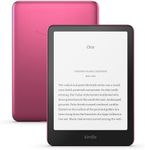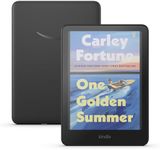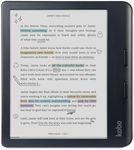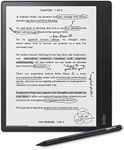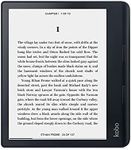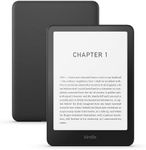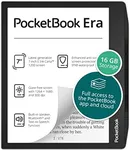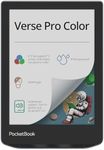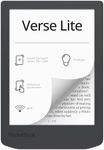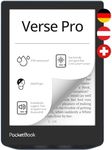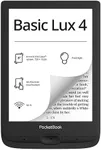Buying Guide for the Best Ereaders
Choosing the right eReader can greatly enhance your reading experience, making it more convenient and enjoyable. When selecting an eReader, consider how you plan to use it, where you'll be reading, and what features are most important to you. This will help you narrow down the options and find a device that fits your lifestyle and reading habits.Screen SizeScreen size is the diagonal measurement of the eReader's display. It is important because it affects how much text fits on the screen and how portable the device is. Smaller screens, around 6 inches, are more portable and easier to hold for long periods, making them ideal for reading on the go. Larger screens, 7 inches and above, can display more text and are better for reading complex documents or PDFs. Choose a screen size based on your reading habits and whether you prioritize portability or a larger reading area.
Screen ResolutionScreen resolution refers to the number of pixels on the display, which affects the clarity and sharpness of the text. A higher resolution means crisper text and images, which can reduce eye strain during long reading sessions. Common resolutions include 800x600 for basic models and 1440x1080 or higher for premium models. If you read a lot or have sensitive eyes, opt for a higher resolution to ensure a comfortable reading experience.
Storage CapacityStorage capacity determines how many books and documents you can store on your eReader. Most eReaders come with 4GB to 32GB of storage. If you primarily read text-based books, even the smallest capacity will hold thousands of titles. However, if you plan to store audiobooks, comics, or PDFs, consider a model with more storage. Think about your reading habits and whether you prefer to have a large library at your fingertips or if you don't mind managing your collection more frequently.
Battery LifeBattery life indicates how long the eReader can operate on a single charge. This is crucial for those who read frequently or travel often. Most eReaders offer weeks of battery life, but this can vary based on usage, such as screen brightness and wireless connectivity. If you read a lot or travel, look for a model with longer battery life to avoid frequent charging. Consider your reading habits and how often you'll have access to a charger when choosing.
ConnectivityConnectivity options include Wi-Fi and, in some models, cellular connectivity. Wi-Fi allows you to download books and access online features when connected to a network. Cellular connectivity provides access to these features anywhere with a signal, but usually comes at an additional cost. If you frequently download books on the go or don't always have access to Wi-Fi, consider a model with cellular connectivity. Otherwise, Wi-Fi should suffice for most users.
Water ResistanceWater resistance is a feature that protects your eReader from accidental splashes or submersion in water. This is important if you plan to read near water, such as at the beach or by the pool. Water-resistant models are rated with an IPX standard, with higher numbers indicating better protection. If you often read in environments where water exposure is possible, consider a water-resistant model to ensure durability and peace of mind.
LightingLighting refers to the built-in illumination that allows you to read in low-light conditions. This is important for reading at night or in dimly lit environments. Some eReaders offer adjustable front lights, which can be customized for brightness and warmth. If you read in various lighting conditions, look for a model with adjustable lighting to ensure a comfortable reading experience without straining your eyes.
